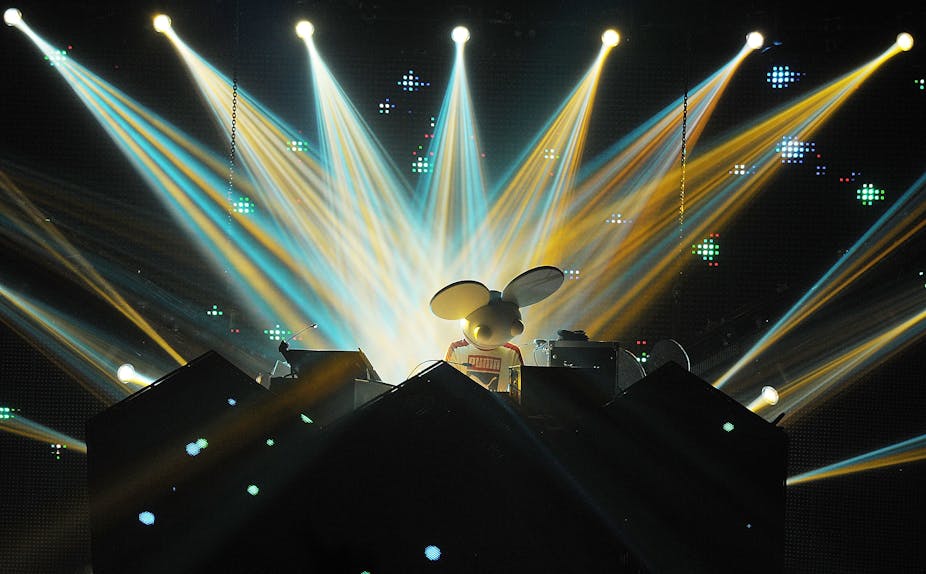People are very good at moving in time to a beat. When you listen to your favourite song, you will probably find yourself nodding your head or tapping your foot along almost instinctively.
And when you’re doing it in a club, that piles pressure on your DJ. That DJ has to mix two songs together to maintain a common beat between the tracks if they want to keep the audience dancing. If they do a bad job of the mix, the two beat lines from each song won’t blend into each other. The most likely result of such a faux pas would be an instantly empty dance floor.
We’ve been investigating how closely matched two beat lines need to be for people to start moving in time to them as if they form a common beat. In other words, how accurate does a DJ need to be to make a seamless transition between songs?
We asked people to tap their finger in time to two metronomes played simultaneously. The separation between the two metronomes and the consistency (the predictability of the rhythms) was varied across the experiment.
We found that if the metronomes were very consistent, they had to be closely matched in time for them to be considered a common beat. But if the beats of the individual metronomes were inconsistent and less predictable, the separation between the beats could be larger while still being considered to form a single common beat.

Since a DJ will typically play tunes with a strongly defined beat, our research shows that in fact they have a very small margin of error to make the two beat lines sound as one to the dancing crowd.
The skill of DJing is probably more complex than people realise. Many of them might be high profile and living a super-star lifestyle but the professional DJ is an as-yet largely under-researched species. Along with the University of Leeds, we’re now investigating the timing skills of professional DJs who have only received informal training (as is generally the case) and comparing them to formally trained classical musicians.
Mathematical moshing
The models resulting from this research are also being applied to other areas, including crowd movements. In football stadiums the crowd will often become excited and start to bounce up and down together.
When the crowd moves together like this it can create problems with structural vibration so it’s useful to understand how and when a crowd is likely to start moving in synchrony.
The conditions under which this occurs are oddly similar to the beat matching of songs. A crowd moving together has developed a common beat between them. In this case however, rather than just sound, they are also combining vision and touch from the people surrounding them. We are working towards understanding how the brain combines all this conflicting and unreliable sensory information to develop a common beat to which everyone moves.
Information like this can then be used to inform the construction of stadiums and bridges. This should result in better structural designs with less wobble when the crowd get excited.
So next time you scoff at the superstar DJ being paid a fortune to play a few songs, give them a little credit. These results show that we continuously adjust our judgements of events in our environment according to the statistics of the sensory information we get from those events. Making two beats into one, maintaining your audience as you go, is a fine art.

